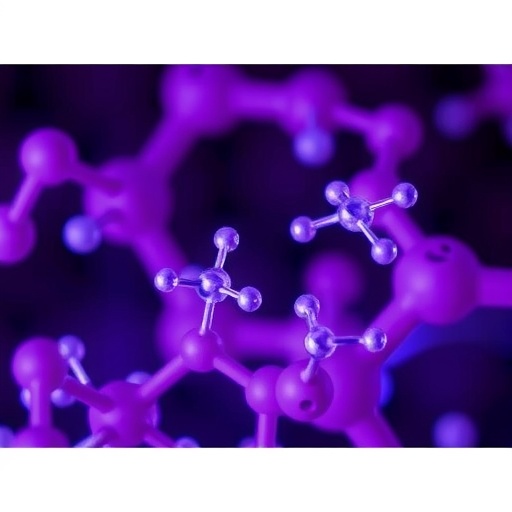In the arena of sustainable energy solutions, the development of efficient catalysts plays a pivotal role in enhancing electrochemical processes, particularly in the context of renewable energy systems. A recent ground-breaking study conducted by a team of researchers, including Ullah, Music, and Blacha-Grzechnik, presents a notable advancement in the realm of Ni-based electrocatalysts and their interaction with hydrogen peroxide. This study, encapsulated in the journal Ionics, sheds light on the potential of these materials to revolutionize energy conversion technologies.
Electrocatalysts are vital components in energy conversion devices, functioning to accelerate electrochemical reactions. In this context, nickel (Ni)-based catalysts have garnered significant attention due to their affordability, abundant availability, and impressive electrochemical performance. The research team meticulously investigated the surface interactions between Ni-based electrocatalysts and hydrogen peroxide (H2O2), a compound that has emerged as a critical intermediary in various electrochemical applications, including fuel cells and metal-air batteries.
The interaction between electrocatalysts and hydrogen peroxide is fraught with complexities that can significantly influence reaction kinetics and overall efficiency. The study leverages advanced characterization techniques to explore the structural and electronic properties of Ni-based catalysts upon exposure to H2O2. This nuanced understanding of surface interactions enables researchers to tailor catalyst designs for enhanced performance and longevity under operational conditions.
The findings revealed that the surface modifications induced by hydrogen peroxide could alter the electronic properties of the Ni-based catalysts, thereby enhancing their catalytic activity. The electron transfer capabilities of these materials play a crucial role in determining their effectiveness in facilitating electrochemical reactions. By elucidating these mechanisms, the researchers provide deeper insights into how to optimize catalyst formulations to achieve superior energy conversion rates.
Moreover, the study assessed the impact of varying concentrations of hydrogen peroxide on the electrocatalytic behavior of nickel-based materials. The results indicated that specific concentrations led to optimal catalytic performance, underlining the necessity for precise control over reaction conditions in practical applications. These revelations pave the way for more nuanced and adaptable approaches in catalyst design, particularly in carbon-neutral technologies aimed at mitigating climate change.
In addition to enhancing our understanding of surface interactions, this research has broader implications for the development of green energy solutions. Hydrogen peroxide is not only a product of various electrochemical reactions but is also viewed as a sustainable oxidant in energy conversion systems. With the ability to utilize hydrogen peroxide effectively, Ni-based electrocatalysts could potentially offer a pathway toward more efficient and environmentally friendly energy storage and conversion systems.
Furthermore, the research team dedicated a considerable portion of their study to modeling the interactions at the atomic level. Through computational simulations, they were able to predict the behavior of Ni-based catalysts in diverse electrochemical environments. Such predictive capabilities are invaluable for guiding future experimental designs and refining catalyst development strategies.
The results from this research define a critical intersection between chemistry and material science, effectively bridging the gap between theoretical understanding and practical application. By exploiting the surface chemistry of nickel-based materials, scientists can now forge pathways toward more sustainable energy solutions that are not only feasible but may also become commercially viable in the near future.
Equally important is the contribution of this study to the ongoing discourse surrounding sustainable energy practices. The implications of effectively utilizing hydrogen peroxide in electrocatalytic applications could resonate throughout the renewable energy landscape, advocating for a shift towards cleaner, more efficient technologies. By adhering to principles of sustainability and innovation, this line of inquiry highlights the potential of interdisciplinary research to address multifaceted energy challenges.
The quest for efficient catalytic materials aligns with global efforts to transition towards a more sustainable energy matrix. By focusing on cost-effective and abundant materials like nickel, researchers can pave the way for broader adoption and implementation of cutting-edge technologies. This study serves as a testament to the vital role played by electrocatalysts in shaping the future of energy solutions.
In conclusion, the research conducted by Ullah and his colleagues offers a comprehensive exploration of the surface interactions of Ni-based electrocatalysts with hydrogen peroxide. Their findings not only illuminate critical aspects of catalyst behavior but also provide a framework for future research aimed at optimizing energy conversion processes. As we stand at the crossroads of energy innovation, this work underscores the necessity of developing robust, efficient, and sustainable materials that can drive progress toward a cleaner future. The implications of this research extend beyond academia, possessing the potential to inform policy and guide technological advancements in the years to come.
The continuous refinement of electrocatalysts and the exploration of their interactions with key reactants such as hydrogen peroxide hold promise for the next generation of energy technologies. As researchers strive to bridge the gap between theoretical frameworks and practical applications, the insights gained from such studies will likely play a crucial role in shaping the trajectory of renewable energy advancements.
Ultimately, this study not only contributes to the scientific community’s understanding of electrocatalysis but also resonates with broader societal reforms geared towards achieving sustainable and resilient energy futures. By supporting such innovative research endeavors, stakeholders can further facilitate the transition to greener energy solutions that address pressing global challenges.
Subject of Research: Interaction of Ni-based electrocatalysts with hydrogen peroxide
Article Title: Surface interaction of Ni based electrocatalyst with hydrogen peroxide.
Article References:
Ullah, N., Music, D., Blacha-Grzechnik, A. et al. Surface interaction of Ni based electrocatalyst with hydrogen peroxide. Ionics (2025). https://doi.org/10.1007/s11581-025-06856-3
Image Credits: AI Generated
DOI: 10.1007/s11581-025-06856-3
Keywords: Ni-based electrocatalysts, hydrogen peroxide, electrocatalysis, energy conversion, sustainable technologies.




